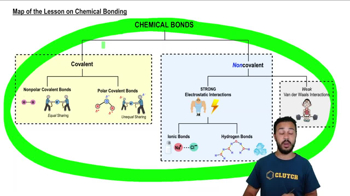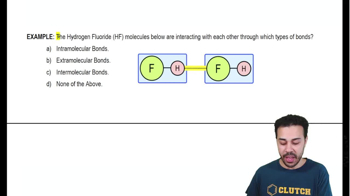Table of contents
- 1. Introduction to Biology2h 42m
- 2. Chemistry3h 40m
- 3. Water1h 26m
- 4. Biomolecules2h 23m
- 5. Cell Components2h 26m
- 6. The Membrane2h 31m
- 7. Energy and Metabolism2h 0m
- 8. Respiration2h 40m
- 9. Photosynthesis2h 49m
- 10. Cell Signaling59m
- 11. Cell Division2h 47m
- 12. Meiosis2h 0m
- 13. Mendelian Genetics4h 44m
- Introduction to Mendel's Experiments7m
- Genotype vs. Phenotype17m
- Punnett Squares13m
- Mendel's Experiments26m
- Mendel's Laws18m
- Monohybrid Crosses19m
- Test Crosses14m
- Dihybrid Crosses20m
- Punnett Square Probability26m
- Incomplete Dominance vs. Codominance20m
- Epistasis7m
- Non-Mendelian Genetics12m
- Pedigrees6m
- Autosomal Inheritance21m
- Sex-Linked Inheritance43m
- X-Inactivation9m
- 14. DNA Synthesis2h 27m
- 15. Gene Expression3h 20m
- 16. Regulation of Expression3h 31m
- Introduction to Regulation of Gene Expression13m
- Prokaryotic Gene Regulation via Operons27m
- The Lac Operon21m
- Glucose's Impact on Lac Operon25m
- The Trp Operon20m
- Review of the Lac Operon & Trp Operon11m
- Introduction to Eukaryotic Gene Regulation9m
- Eukaryotic Chromatin Modifications16m
- Eukaryotic Transcriptional Control22m
- Eukaryotic Post-Transcriptional Regulation28m
- Eukaryotic Post-Translational Regulation13m
- 17. Viruses37m
- 18. Biotechnology2h 58m
- 19. Genomics17m
- 20. Development1h 5m
- 21. Evolution3h 1m
- 22. Evolution of Populations3h 52m
- 23. Speciation1h 37m
- 24. History of Life on Earth2h 6m
- 25. Phylogeny2h 31m
- 26. Prokaryotes4h 59m
- 27. Protists1h 12m
- 28. Plants1h 22m
- 29. Fungi36m
- 30. Overview of Animals34m
- 31. Invertebrates1h 2m
- 32. Vertebrates50m
- 33. Plant Anatomy1h 3m
- 34. Vascular Plant Transport1h 2m
- 35. Soil37m
- 36. Plant Reproduction47m
- 37. Plant Sensation and Response1h 9m
- 38. Animal Form and Function1h 19m
- 39. Digestive System1h 10m
- 40. Circulatory System1h 57m
- 41. Immune System1h 12m
- 42. Osmoregulation and Excretion50m
- 43. Endocrine System1h 4m
- 44. Animal Reproduction1h 2m
- 45. Nervous System1h 55m
- 46. Sensory Systems46m
- 47. Muscle Systems23m
- 48. Ecology3h 11m
- Introduction to Ecology20m
- Biogeography14m
- Earth's Climate Patterns50m
- Introduction to Terrestrial Biomes10m
- Terrestrial Biomes: Near Equator13m
- Terrestrial Biomes: Temperate Regions10m
- Terrestrial Biomes: Northern Regions15m
- Introduction to Aquatic Biomes27m
- Freshwater Aquatic Biomes14m
- Marine Aquatic Biomes13m
- 49. Animal Behavior28m
- 50. Population Ecology3h 41m
- Introduction to Population Ecology28m
- Population Sampling Methods23m
- Life History12m
- Population Demography17m
- Factors Limiting Population Growth14m
- Introduction to Population Growth Models22m
- Linear Population Growth6m
- Exponential Population Growth29m
- Logistic Population Growth32m
- r/K Selection10m
- The Human Population22m
- 51. Community Ecology2h 46m
- Introduction to Community Ecology2m
- Introduction to Community Interactions9m
- Community Interactions: Competition (-/-)38m
- Community Interactions: Exploitation (+/-)23m
- Community Interactions: Mutualism (+/+) & Commensalism (+/0)9m
- Community Structure35m
- Community Dynamics26m
- Geographic Impact on Communities21m
- 52. Ecosystems2h 36m
- 53. Conservation Biology24m
2. Chemistry
Introduction to Chemical Bonding
Problem 11`
Textbook Question
Which of the following lists the chemical bonds from weakest to strongest?
a. Hydrogen, covalent, ionic
b. Covalent, ionic, hydrogen
c. Ionic, covalent, hydrogen
d. Covalent, hydrogen, ionic
e. Hydrogen, ionic, covalent
 Verified step by step guidance
Verified step by step guidance1
Understand the types of chemical bonds: Hydrogen bonds are weak interactions between a hydrogen atom and an electronegative atom (e.g., oxygen or nitrogen). Ionic bonds occur between oppositely charged ions, and covalent bonds involve the sharing of electron pairs between atoms.
Recall the relative strength of these bonds: Hydrogen bonds are the weakest, ionic bonds are intermediate, and covalent bonds are the strongest.
Analyze the options provided in the question. Compare the order of bond strengths listed in each option to determine which one correctly arranges the bonds from weakest to strongest.
Focus on the correct sequence: Hydrogen bonds should come first (weakest), followed by ionic bonds (intermediate), and finally covalent bonds (strongest).
Select the option that matches this sequence: hydrogen, ionic, covalent.
 Verified video answer for a similar problem:
Verified video answer for a similar problem:This video solution was recommended by our tutors as helpful for the problem above
Video duration:
1mPlay a video:
Was this helpful?
Key Concepts
Here are the essential concepts you must grasp in order to answer the question correctly.
Chemical Bonds
Chemical bonds are the forces that hold atoms together in molecules. The main types of chemical bonds include ionic, covalent, and hydrogen bonds, each differing in strength and the nature of the interaction between atoms. Understanding these bonds is crucial for predicting the properties of substances and their behavior in chemical reactions.
Recommended video:
Guided course

Introduction to Chemical Bonding
Ionic Bonds
Ionic bonds are formed when one atom donates an electron to another, resulting in the attraction between positively and negatively charged ions. This type of bond is typically stronger than hydrogen bonds but weaker than covalent bonds. Ionic compounds often have high melting and boiling points due to the strong electrostatic forces between the ions.
Recommended video:
Guided course

Ionic Bonds
Covalent Bonds
Covalent bonds occur when two atoms share one or more pairs of electrons, creating a strong bond that holds the atoms together. These bonds can vary in strength depending on the number of shared electron pairs, with double and triple bonds being stronger than single bonds. Covalent bonding is fundamental in the formation of organic molecules and biological macromolecules.
Recommended video:
Guided course

Covalent Bonds

 6:53m
6:53mWatch next
Master Introduction to Chemical Bonding with a bite sized video explanation from Jason
Start learningRelated Videos
Related Practice










